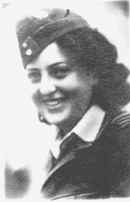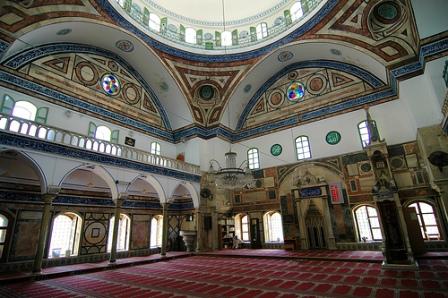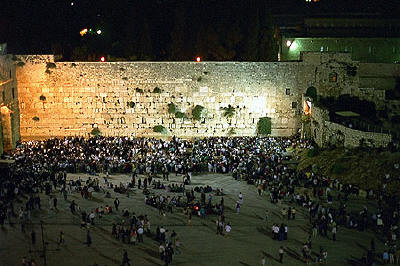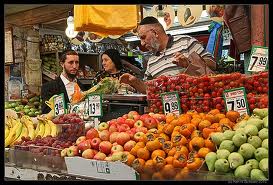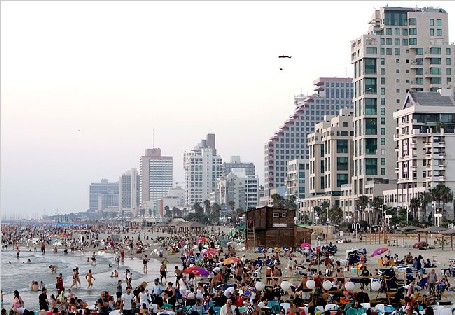 TEL AVIV: Life is a beach … or so it seems. After checking the email (dewey.exchange defender.com/owa) and checking the voicemail (8×8.com) we headed out … out of Tel Aviv. Our goal was to travel North. We found our car (free courtesy of hosts from HomeExchange.com) and headed out. We turned on our portable GPS (que.com) and decided to wander, knowing that we would be “neverlost”.
TEL AVIV: Life is a beach … or so it seems. After checking the email (dewey.exchange defender.com/owa) and checking the voicemail (8×8.com) we headed out … out of Tel Aviv. Our goal was to travel North. We found our car (free courtesy of hosts from HomeExchange.com) and headed out. We turned on our portable GPS (que.com) and decided to wander, knowing that we would be “neverlost”.
We headed down Rothschild Boulevard, past the tent city, quiet in the early morning sun. After wandering through the “colonial” area, past homes of dubious construction and age, we turned to the beach, the heart of the “modern” city. The beaches are wide, clean and sandy. They are lined by luxury high rises and resorts. Visions of pioneer Israel with the dust and dilapidated buildings that predated my visit were nowhere to be seen. The sights were quite distinct from those of “Exodus” … the book, not the torah scroll.
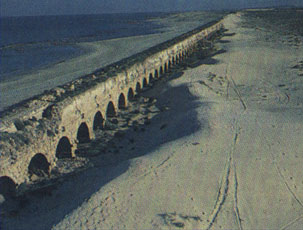 Up and out. We headed North of the city. Passing Dizengoff Street, the cafe district, and by the “Tal Hotel”, the scene of my last debauchery in Israel when I traveled as a recent U.Penn Law School graduate, on a tour courtesy of the WZO. We passed lush parks by the river. The haphazard construction of Tel Aviv was replaced by the modern totally planned cities north of Tel Aviv.
Up and out. We headed North of the city. Passing Dizengoff Street, the cafe district, and by the “Tal Hotel”, the scene of my last debauchery in Israel when I traveled as a recent U.Penn Law School graduate, on a tour courtesy of the WZO. We passed lush parks by the river. The haphazard construction of Tel Aviv was replaced by the modern totally planned cities north of Tel Aviv.
Highway 2 which heads along the Mediterranean passed one planned modern city after another. There is the Microsoft research center, and Citrix, and Nokia, and Technion, and Google. Sleek glass towers look out on the Mediterranean sea, monuments to the ingenuity of the Israeli and the aliyot. Past these modern wonders; cities in the sand, we raced in our air conditioned chariot; racing back in time 2000 years to the time of King Herod “the Great”. We were off to Ceasaria (multiple spellings abound).
Off the highway, we passed lush gardens and emerged at the park entrance. Here King Herod, to impress his Roman patrons built a lavish deep water port. He was not stopped by the fact that there was no deep water harbour to dock ships. Instead, he had a vision of a land, in the sand dunes that was centrally located commercially on the trade routes between Egypt, Sidon, Athens and Rome. He was not limited by his surroundings; he was the “master of his surroundings.”
To get fresh water for his planned city and monument to Caesar Augustus, he built an aqueduct (seen above) along the sea several miles to a source of fresh water. And for his harbor, he performed an engineering feat which is astounding even in modern times, taking wooden pylons, and filling them with volcanic ash, and sinking them to create an enormous harbour far out into the ocean. Volcanic ash, sand and sea water creates waterproof, sea salt impervious concrete. The remains of his palace, the aqueduct and the harbor are impressive to this day.
In the harsh afternoon sun, nearly 100 degrees in August, we baked. I thought, why would Herod build his city here; no shade, baking sun. And yet, a few hours later (after swimming in the shadows of the Roman aqueduct, we returned as the sun was setting. The temperature had dropped 20 degrees and there was a steady cool breeze coming from the sea. The place, empty and stark, was now filled with elegantly dressed Israelis out for their entertainment. The outdoor restaurants were overflowing; music was in the air, and the wine flowed freely. Modern Israel met ancient Palestine, and they were one.
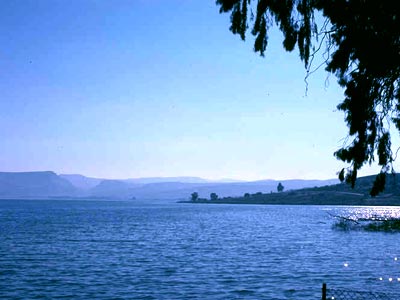 One bit of disclosure … the beautiful pictures are NOT mine, they are “borrowed”. They are meant to be illustrative. We did take digital photos, and I will try to make them available to those interested after editing the list.
One bit of disclosure … the beautiful pictures are NOT mine, they are “borrowed”. They are meant to be illustrative. We did take digital photos, and I will try to make them available to those interested after editing the list.

